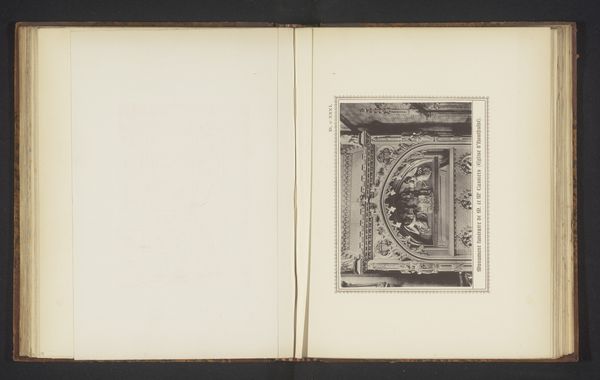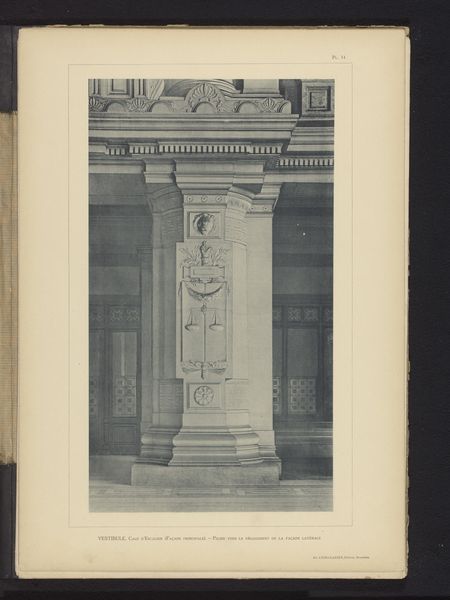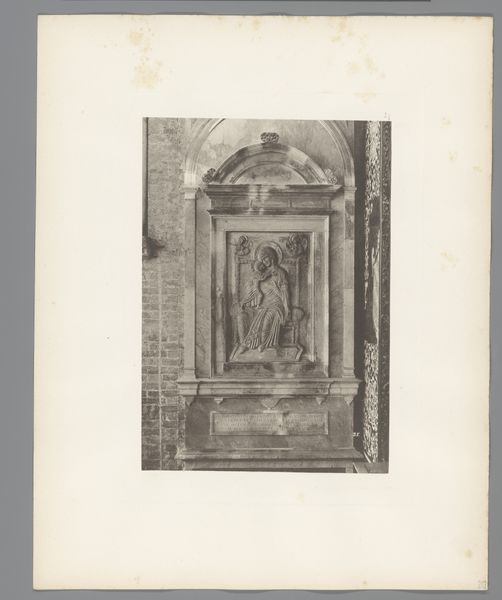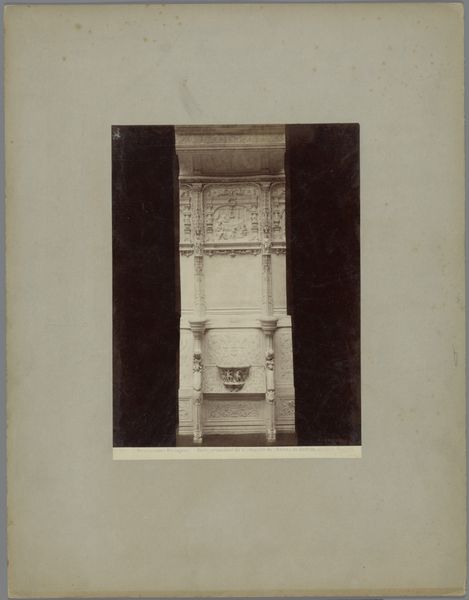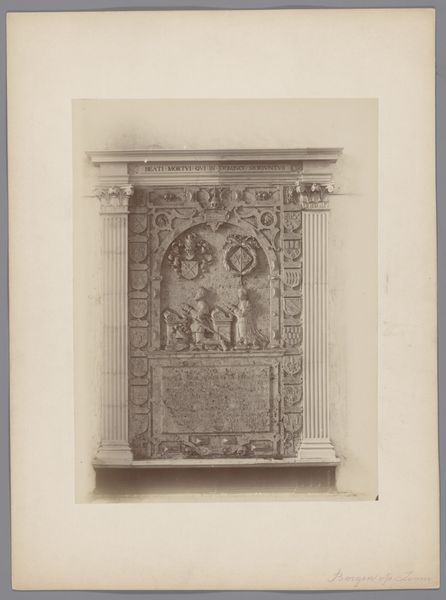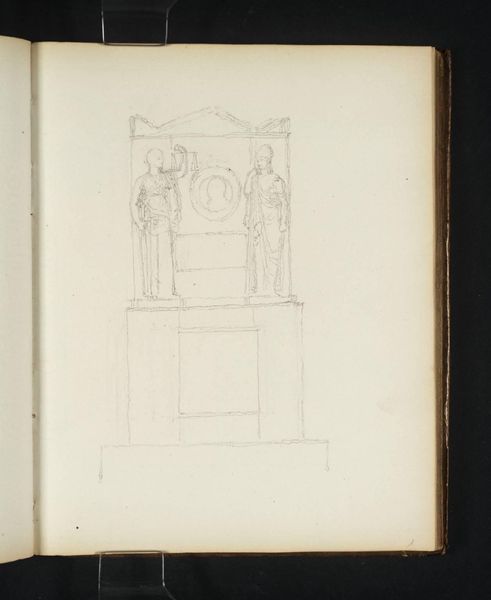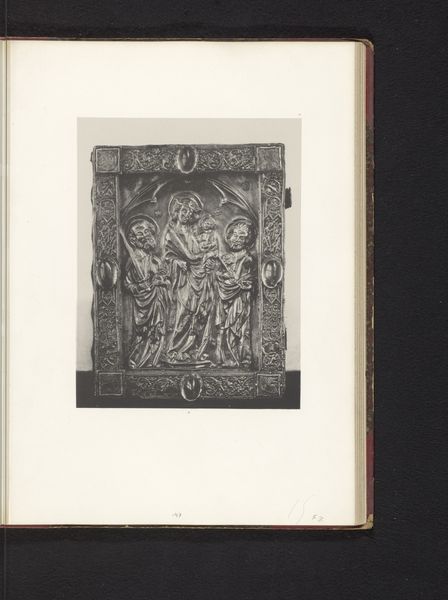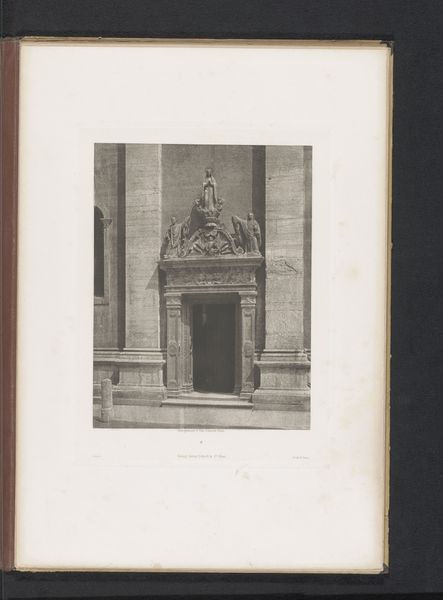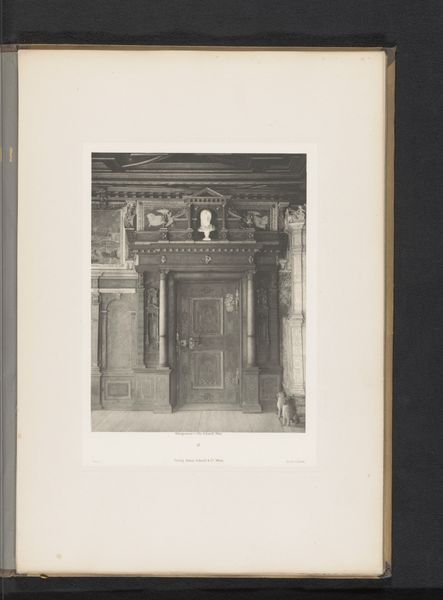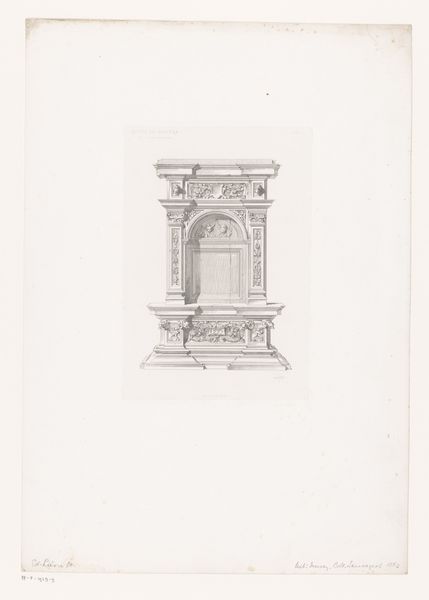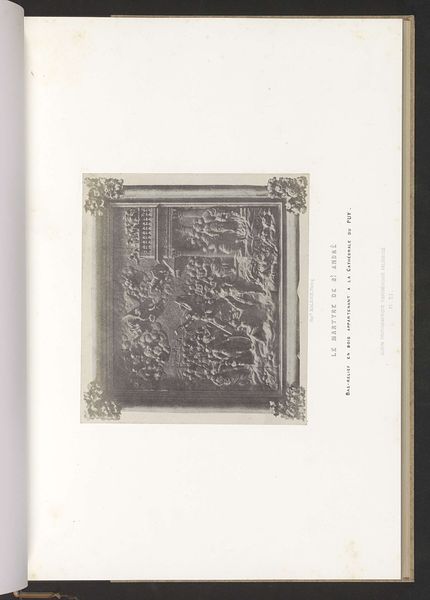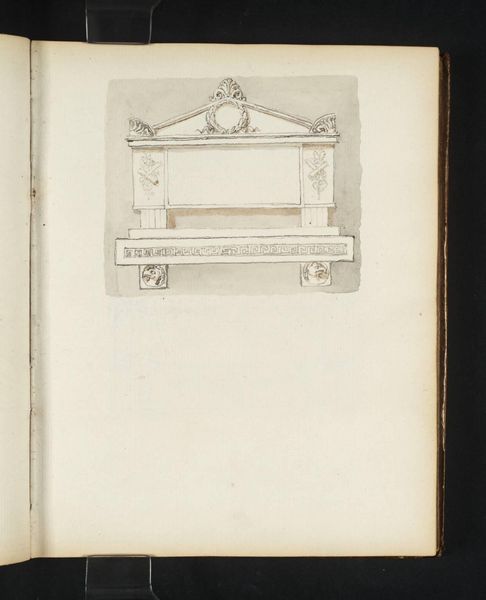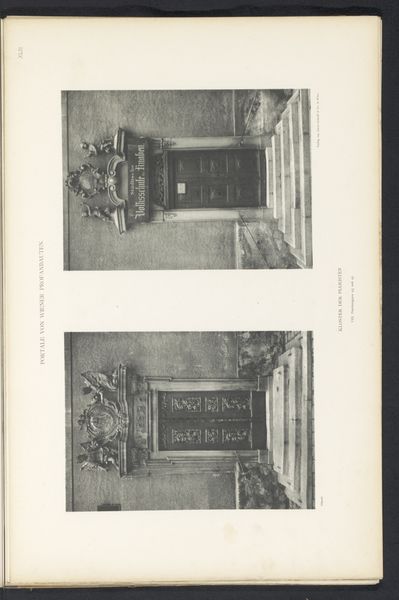
Reliëf op het monument voor Johannes Gutenberg te Mainz, voorstellende Johannes Gutenberg toont blokletters before 1872
0:00
0:00
print, relief, photography, sculpture
#
portrait
# print
#
relief
#
photography
#
ancient-mediterranean
#
sculpture
#
history-painting
#
academic-art
Dimensions: height 167 mm, width 130 mm
Copyright: Rijks Museum: Open Domain
Editor: This is a photographic print of a relief on the Johannes Gutenberg monument in Mainz, Germany, created by B. Erdmann before 1872. It portrays Gutenberg presenting block letters. The classical style feels very formal and celebratory. What symbols stand out to you in this image? Curator: The letters themselves are incredibly powerful symbols. Gutenberg's invention wasn't just about producing text; it unlocked the widespread dissemination of ideas. Look at the way he's holding those letters, almost like presenting sacred objects. The monument itself signifies a communal desire to memorialize the innovator, ensuring that his actions are not lost to collective cultural memory. Does the image evoke associations to older relief images, perhaps even in ancient monuments? Editor: I hadn't considered it that way, but I do see it. The carving recalls Roman friezes, which would reinforce the importance and lasting legacy of the event portrayed. But doesn't the black and white medium take away some of the impact of the original? Curator: Perhaps. However, photography, at this time, was becoming a tool for documentation and dissemination itself. By photographing the relief, Erdmann paradoxically recreates that sense of spread that Gutenberg himself enabled. Even today, aren’t we relying on a digital image to access a representation of a historical innovation? The symbol continues its layered trajectory! Editor: That’s a great point. The layering of reproduction after reproduction. I never would have looked at this and thought about cultural memory contained within a symbol, but your explanation gives me a lot to think about. Curator: Indeed! The image is more than just its literal representation. It is, quite literally, a multi-layered engraving in time.
Comments
No comments
Be the first to comment and join the conversation on the ultimate creative platform.
